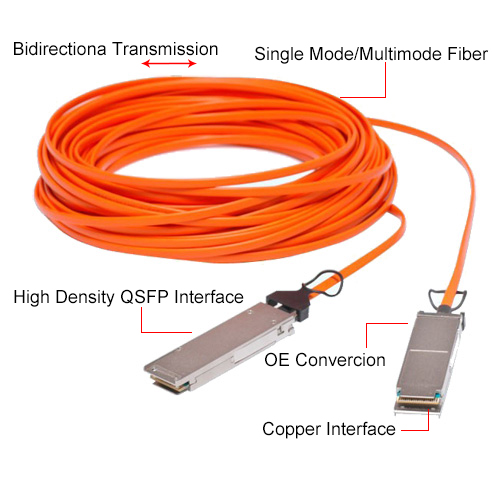As data volumes grow and bandwidth demands rise, 100G networks have become the standard in data centers and enterprise networks. 100G high-speed cables are essential for these systems, ensuring fast and stable connections. Choosing the right cable can be challenging — this guide explains what 100G cables are, their advantages, and how to select the best one for your needs.
What Is a 100G High-Speed Cable?
A 100G high-speed cable supports data transmission rates up to 100Gbps using conductive copper to directly connect devices. It typically adopts a shielded twisted-pair design and contains no active optical components. These cables are commonly used for rack-level connections in data centers, linking compute servers to storage systems or switches.
Advantages of 100G High-Speed Cables
High Performance: Designed for short-distance transmission, 100G cables deliver low latency and high bandwidth, making them ideal for high-speed switching and routing inside data centers.
Low Power Consumption: Since they transmit electrical signals directly through copper, these cables consume less power — a key benefit in energy-efficient environments.
Cost-Effective: Compared with optical modules and fiber cables, high-speed cables offer a lower-cost solution for short links, significantly reducing deployment expenses.
Easy Installation: They are flexible, compact, and easy to install, occupying less rack space. This makes them suitable for dense server environments or setups requiring frequent reconfiguration.
How to Choose the Right 100G High-Speed Cable
- Passive vs. Active
A passive 100G cable does not require external power or active components. It simply transmits signals through copper and is ideal for short distances (up to 5 meters).
An active 100G cable, on the other hand, includes built-in electronics that amplify and equalize signals, enabling longer and more stable transmission up to around 9 meters.
- Connector Type
Connector types determine compatibility with network equipment. Common 100G interfaces include QSFP28, SFP56-DD, and SFP112.
For example, TARLUZ provides configurations such as:QSFP28 to QSFP28, QSFP28 to 4×SFP28, SFP56-DD to SFP56-DD. Multi-port breakout cables are often used to connect multiple lower-speed devices. Always check your equipment’s port type and data rate to ensure full compatibility.
- AWG Rating
The AWG (American Wire Gauge) value indicates the cable’s thickness and current-carrying capacity. Lower AWG (e.g., 24AWG) = thicker cable, higher current, suitable for shorter distances and higher performance. Higher AWG (e.g., 30AWG) = thinner cable, better flexibility, suitable for longer distances.
- Cable Length
Cable length affects both signal quality and network reliability.
- Passive 100G cables: up to 5m
- Active 100G cables: up to 9m
Choosing the optimal length helps balance performance, cost, and manageability in your data center environment.



